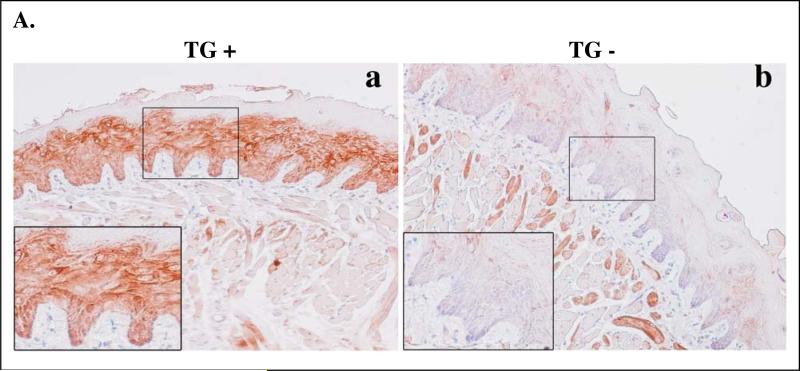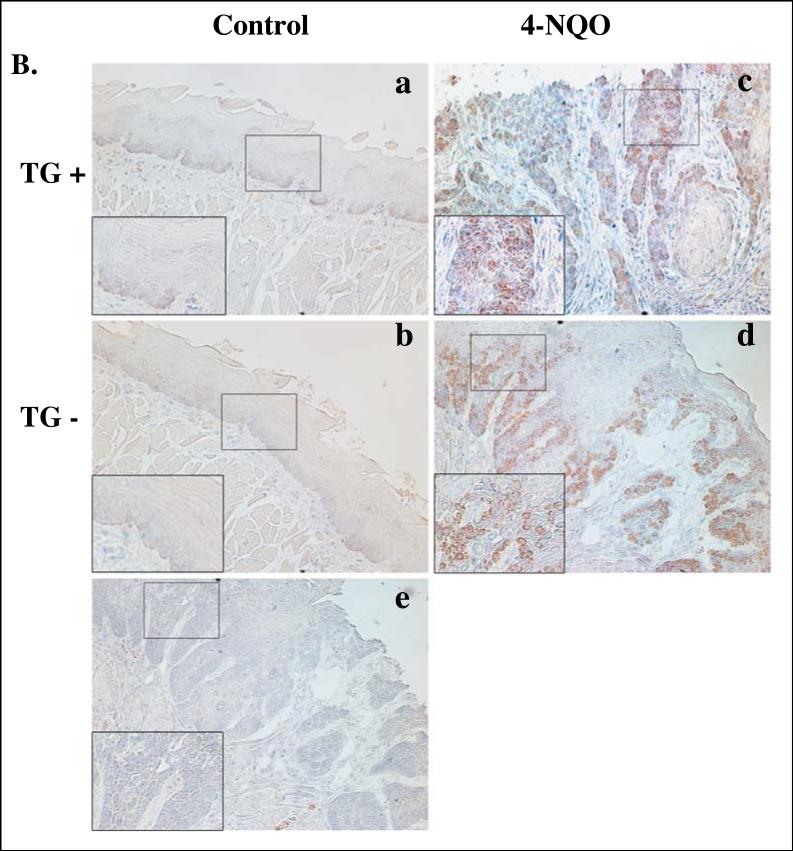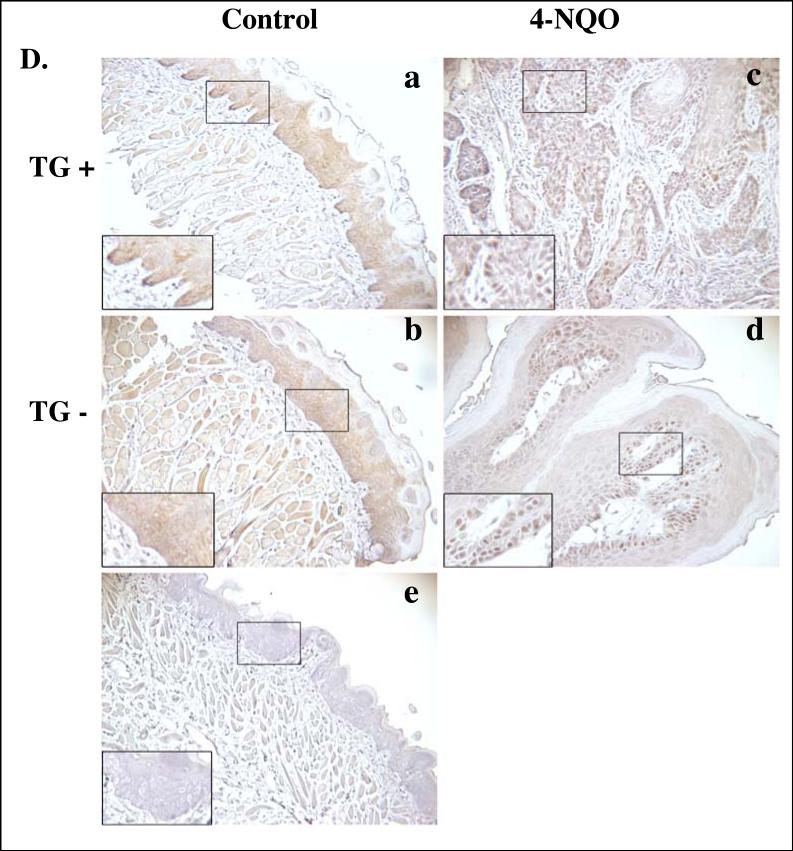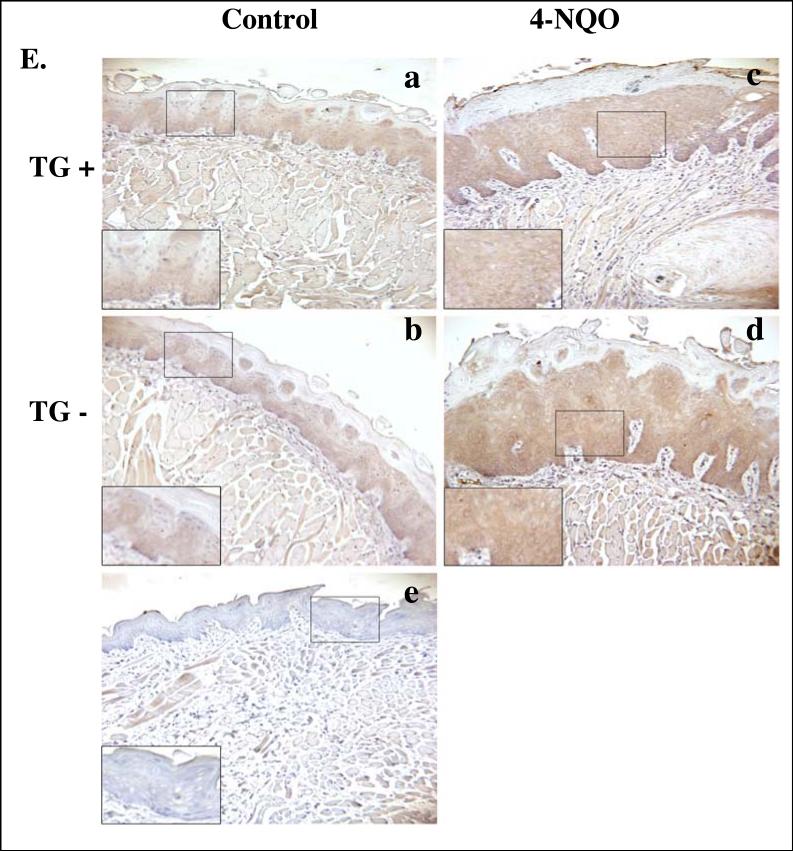Figure 5. Expression of hLRAT, PCNA, p16, cyclin D1, and phospho-Akt (ser 473) proteins in control (not treated with 4-NQO) and 4-NQO treated mouse tongues.
K14/FLAG-hLRAT TG positive and negative mice were treated with propylene glycol (vehicle) or 4-NQO (100 μg/ml) in drinking water for 10 weeks and then maintained for another 15 weeks. Mice were sacrificed, and the tongues were fixed, embedded, sectioned, and stained with anti-hLRAT, anti-PCNA, anti-p16, anti-cyclin D1, and anti-phospho-Akt (Ser 473) antibodies, respectively (see “Materials and Methods”) (200 ×). A, hLRAT staining of 4-NQO treated mouse tongues (a and b TG+; c, TG-; a and c, before tumor appears; b, tumor). B, PCNA staining of mouse tongues. C, p16 staining of mouse tongues. D, cyclin D1 staining of mouse tongues. E, phospho-Akt (Ser 473) staining of mouse tongues. In panels B to E: a and c, TG positive mouse tongues; b and d, TG negative mouse tongues. a and b, control (not treated with 4-NQO) mouse tongues; c and d, 4-NQO treated mouse tongues. e, negative control, a mouse tongue stained only with a secondary antibody. The inset in each picture is 3 × the digital magnification of the small boxed area in the picture.





